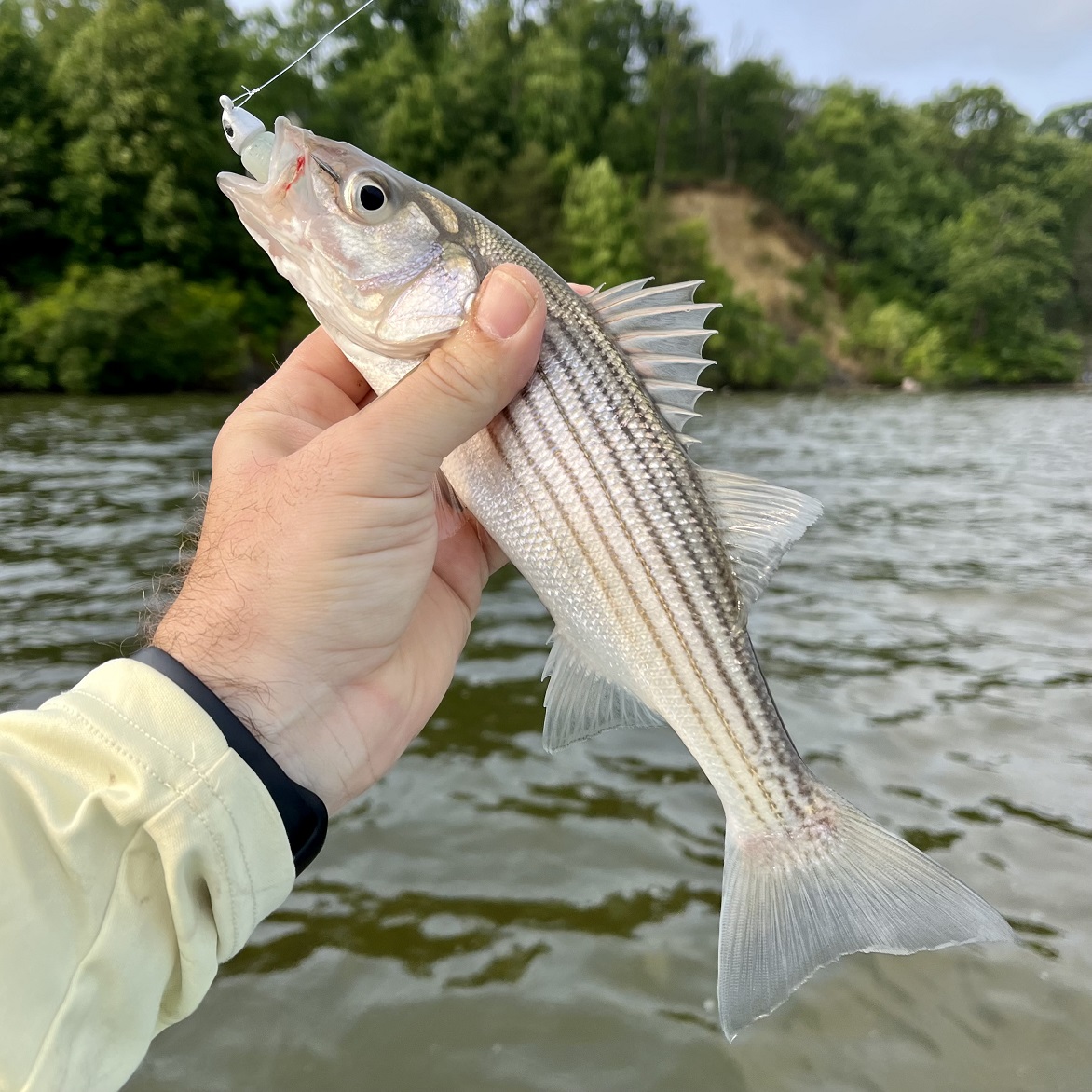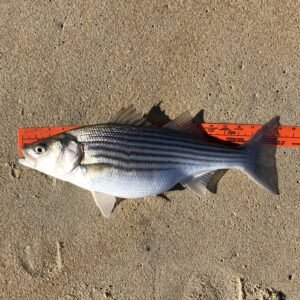Welcome to Reel Chesapeake’s Weekly Fishing Report, our interpretation of what’s biting and where throughout the Chesapeake Bay watershed. Please email us directly at editor@reelchesapeake.com to share updates and photographs of your recent catches for potential inclusion in next week’s column.
Mid-Bay water temperatures remain at the 67–70 degree mark in the main channel and finger tributaries. The region has felt stable, consistent weather all week with mild overnight temps in the 50s and daytime highs hardly eclipsing 75. Tides have been running strong, especially around the Chesapeake Bay Bridge pilings, with mornings seeing the highest flood and evenings the secondary peak. What does this mean for fishing? Well, the fish are everywhere. Quite scattered. Find the fish and you’ll have a nice outing.

Striped bass continue to be the main draw, even in catch-and-release tributaries. Reports of solid morning and evening topwater bites for school-sized fish up to 30” are getting anglers, myself included, excited to give the plugs a try. But locating the fish can be a chore and take up valuable fishing time. Most successful reports came from the mouths of rivers and main stem points, jutting in the Bay proper. Between the South and West Rivers, especially the Thomas Point area, you should be able to find marks. Be careful between Thomas’ point and lighthouse, as there are scattered rock piles within the shallower water. Upwards, the Patapsco area around the Fort Carroll sanctuary has produced several solid striper reports. Even further north, a good report came in of a dynamite evening topwater bite in the Susquehanna Flats (catch-and-release through May 31st).
Your best opportunity for topwater stripers will be casting points/sandbars and grasslines (the transition from grassbed to dropoff) during the very early sunrise or sunset. The Eastern side of the Bay is especially lush with these features. When the sun reaches four fingers above the horizon plan to switch to jigging the fish that have moved into deeper environs. A classic bucktail with split-tail trailer still works wonders. Large-eyed jigheads tipped with Zman DieZel MinnowZ, BKDs, and the like are also effective.
We’re anticipating the nicer-sized schoolies to continue pushing further into and up the rivers, following the peanut bunker that are marking everywhere right now. This should make the topwater bite more accessible, especially for small craft and kayak anglers. Right now, we’re still only seeing small fish in the 12–15” range. In the meantime, the white perch bite is moderate. Deepwater dock fishing is an excellent option if your casting skills are up to snuff. Find a run a docks that transition from shallow (3–5’) to deep (10’-plus) and try skipping perch-sized lures (Kastmasters, perch pounders, small jigs/grubs) under and around them. Every river of the Chesapeake has this structure where perch can be found.
The other two big bites that anglers are chasing are bull red drum and spotted sea trout. Most reports continue to come from more southern waters near the mouth of the Potomac and across the Bay to the fertile Eastern Shore islands, Honga River, and Fishing Bay. When all else fails, there are blue, channel, flat, bullhead, and white catfish willing to take a soaking chunk bait. The entire Potomac watershed is renowned for them. Same for northern snakehead, which are spawning or finishing up, making the bite challenging but doable.
At the Atlantic beaches and inlets, a mix of spawning-sized stripers (the last of the run pushing out of the Bay and northward) and a good grade of bluefish are being reported. In the back bays, the flounder bite appears consistent. Good luck!
This report appears within On The Water magazine’s weekly collection of Chesapeake Bay fishing reports.




